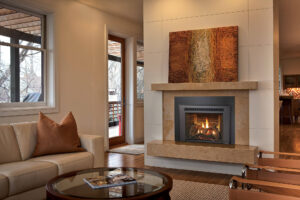After purchasing the fireplace, you need to prepare the surrounding walls for it. First, mark a square on the wall with an interior firestop. This square must be centered 1 inch above the vent pipe. Next, order the necessary parts from your local home improvement center. You can schedule a plumber and electrician to arrive at a later date. If you want to install an optional fan or remote control, you need to relocate the electrical boxes. Finally, you need to secure the wood backing in place between studs. Click here at https://fireplacelasvegas.com/ to learn more.

If you’re planning to install a fireplace yourself, you should know that it will take anywhere from a day to a week. This is because of the size of the fireplace, preexisting setup, and demolition. Therefore, it is advisable to hire a licensed and bonded installer. Additionally, a licensed professional will explain what work is involved, and how long each major task will take. Finally, choosing a contractor with experience will ensure that you receive the best service possible.
The type of fuel you want to use will also influence the cost of fireplace installation. While freestanding models require very little installation, those set into a wall will cost more. It’s also important to remember that cost should not be the sole determining factor. Different types of mounting suit different types of homes, areas, and decorating schemes better than others. Before making your final decision, make sure that the contractor you choose is certified in fireplace installation. For example, logs are best for homes that have an older design, while electric models will look better in modern houses.
Before hiring a professional to install your fireplace, remember to check their certifications and licenses. While installing a fireplace isn’t rocket science, it is important to understand NFPA 211, as well as the manufacturer’s installation guidelines and code requirements. Also, make sure the company is NFI-certified, as these standards help ensure the safety of your home. If you can’t find a contractor certified in fireplace installation, you can search online.
If you are looking to install a fireplace in an existing home, you should ask your contractor to install a gas line. If you are planning to install an exterior fireplace, you may need a larger hole than those for interior installations. This can result in additional costs, especially if you want to bring the gas line to an upstairs room. A gas line installation will cost anywhere from $26 to $55 per linear foot, depending on the type of installation. Additionally, depending on the size of your home, some fireplaces may require additional remodeling.
A traditional fireplace installation cost about $1,200 to $4,500. It includes a prefabricated fireplace, a nine-to-24 foot chimney, and roof flashing. While wood-burning fireplaces are more expensive, they are more environmentally friendly and can help you cut your electric bills. The process of installing a fireplace is not difficult if you have the right tools and know-how to use them properly. The best way to go about it is to get some quotes from contractors who have done it before.
A properly installed fireplace will increase the value of your home and improve the look of your room. Not only will a fireplace add beauty to your room, but it will also function as supplemental heating. There are a variety of different models available and different fuels. And you can even customize its design, mounting, and shape. With a little know-how, you’ll be on your way to enjoying a beautiful fireplace for years to come.
A craftsman-style fireplace is typically constructed from stone or wood. It has an outer hearth and an ash dump below. A craftsman-style fireplace usually has a larger mantle and clean, simple lines. A craftsman-style fireplace can also feature a decorative mantle. Unlike a modern fireplace, a craftsman-style fireplace is an excellent choice for a home with an eclectic style. You can select from different wood-burning styles and find one that complements your house and taste.

